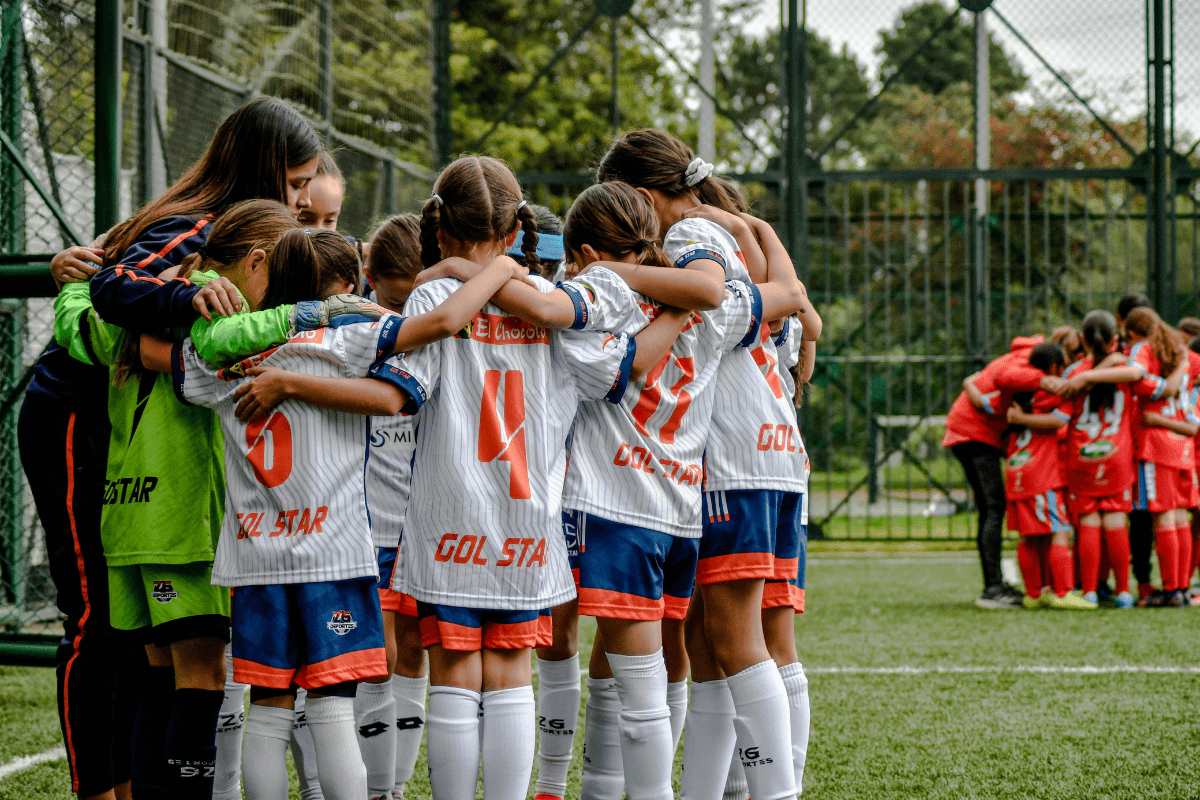Let's be honest… if you're looking at homes in Carmel, you probably already know it's expensive. What you might not know is that homes here sell faster than you can say "roundabout" (average 5-6 days), and you'll be competing with at least two other buyers who also think they've found their dream neighborhood.
The brutal truth about Carmel's housing market
Welcome to one of America's hottest real estate markets, where the median home price sits at $525,000 and your realtor's favorite phrase is "multiple offer situation." The good news? You're looking at the #2 best place to live in the entire country. The challenging news? So is everyone else.
Here's what you're up against: homes receive an average of 3 offers and sell for 98.18% of asking price. Translation: that charming colonial you're eyeing won't last through the weekend, and lowball offers will get you laughed out of town. The market data shows some interesting contradictions too… some sources report a 4.8% price decline while others show 2.9% appreciation. But here's the reality: whether prices are slightly up or down, good homes in good neighborhoods disappear instantly.
You'll need a household income of at least $117,000 to afford the median-priced home with 20% down. And please, for the love of all that's holy, get your pre-approval letter before you even think about scheduling viewings. Seriously. I've seen buyers lose their dream home because they thought they could "figure out financing later."
Understanding Carmel's neighborhood personalities
Think of Carmel as three distinct kingdoms, each with its own vibe, price point, and unspoken social rules. Understanding these differences will save you from the heartbreak of falling in love with a West Carmel mansion on an East Carmel budget.
West Carmel: Where HOA fees have HOA fees
West Carmel is where corporate executives and surgeons go to play house. With a median price around $655,000, this is luxury central. The crown jewel is Village of West Clay, a 280-acre master-planned community with its own village center that feels like Disney World designed a suburb. Entry price? A cool $600,000, and that's before you start eyeing the upgrades.
The ultra-wealthy gravitate toward Bridlebourne, where 10,000+ square foot estates start at $2 million. Yes, million with an M. These gated communities offer privacy, prestige, and property taxes that could fund a small city. Jackson's Grant on Williams Creek offers something unique: it's built on historic presidential land grant property and only allows custom homes. Translation: no cookie-cutter McMansions allowed.
For families who want West Carmel amenities without selling a kidney, consider these options:
- Parks at Springmill
- Clay Springs
- Brookshire North
- Cool Creek North
- Saddle Creek
- Village of Mount Carmel
- Heritage at Spring Mill
- Woodgate subdivisions
But here's the catch with West Carmel living… those HOA fees. Many communities charge $300+ monthly to maintain those perfectly manicured entrances and community pools. That's $3,600 a year just to ensure your neighbor can't paint their house purple. Worth it? That depends on how much you value conformity… I mean, community standards.
East Carmel: Where your money goes further
East Carmel is like West Carmel's older, wiser sibling who doesn't need to prove anything. These 1970s-1980s neighborhoods offer something increasingly rare: actual land. We're talking quarter-acre lots where kids can play without accidentally wandering into the neighbor's outdoor kitchen.
The trade-off? That kitchen probably still has the original 1982 oak cabinets. But for buyers willing to embrace some DIY spirit (or at least hire contractors), East Carmel delivers serious value. Neighborhoods like Laurel Lakes, Hunter's Creek Village, and the various Spring Mill subdivisions offer solid bones at prices that won't require a trust fund.
Here's the East Carmel secret: these neighborhoods feed into the same top-rated schools as their western counterparts. Your kids get the same excellent education, you get a bigger yard, and you save enough money to actually afford their college tuition. Win-win-win.
Downtown: Urban living, suburban style
Downtown Carmel is Indiana's answer to… well, nothing really. It's uniquely its own thing. The Arts & Design District features 17 bronze sculptures, galleries, and the Palladium performing arts center. Recent developments like The Signature ($78 million project with 295 luxury apartments) are bringing more urban-style living options.
But let's talk prices. Downtown condos routinely exceed $500,000, and one recent penthouse sold for $6 million. That's Manhattan money for Indiana real estate. You're paying for the ability to walk to dinner, attend gallery walks, and live car-free(ish) in a state built around automobiles.
The lifestyle appeals to empty nesters tired of mowing lawns and young professionals who value experiences over square footage. Just know that "walkable" is relative… this isn't Chicago. But for suburban Indiana? It's practically revolutionary.
The school situation (spoiler: it's fantastic)
Let's address the elephant in every parent's room: schools. Carmel Clay Schools ranks #2 in Indiana with an A+ rating, and honestly, it might as well be #1 because the competition isn't even close.
By the numbers that matter
Carmel High School is an academic powerhouse disguised as a suburban school:
- 98% graduation rate
- Average ACT score: 30
- 69% math proficiency
- 84% reading proficiency
- 95% AP pass rate
- 35+ AP courses offered
For context, Indiana's average math proficiency is 38%. Carmel nearly doubles that. The school sends graduates off with $14 million in annual scholarships, which helps offset those West Carmel mortgage payments.
Elementary and middle school excellence
The elementary schools maintain 10/10 GreatSchools ratings across the board. Cherry Tree, West Clay, and Forest Dale lead the pack, but honestly, you can't go wrong with any of them. The middle schools all earn A+ ratings from Niche, with Clay Middle School ranking #6 statewide.
Here's a mind-blowing stat: 75% of middle schoolers take high school-level courses. These kids are doing algebra while other districts are still teaching basic fractions. The district also offers comprehensive special education with a 2:1 staff-to-student ratio, plus a High Ability Program for gifted students.
The beauty of Carmel's school system? All neighborhoods eventually feed into the single high school. No boundary anxiety, no strategic home buying based on high school placement. Just pick your neighborhood based on lifestyle and budget, knowing the education will be stellar regardless.
Safety stats that let you sleep at night
Parents, breathe easy. Carmel's crime rate sits at 9 per 1,000 residents, with violent crime at just 0.65 per 1,000. For perspective, Indiana's average is 3.1. You literally have a better chance of getting struck by lightning than being a victim of violent crime in most Carmel neighborhoods.
The safest areas cluster in the northeast, where your chance of any crime is 1 in 124. Central areas near shopping centers see higher rates (1 in 40), but that's mostly retail theft, not residential crime. Nobody's breaking into your Colonial while you're at Whole Foods.
The Carmel Police Department employs 173 full-time officers and supports over 140 neighborhood watch programs. Plus, those famous roundabouts? They've reduced accidents by 40% despite tripling the population since 1996. The city's traffic fatality rate is one-sixth the national average. Even the roads are overachievers here.
Getting around Carmel (hope you like driving)
Let's be real: Carmel's Walk Score is 19 out of 100. This is firmly car-dependent territory. But before you write it off as another sprawling suburb, consider this: the city has 220+ miles of trails and holds a Silver Level Bicycle Friendly designation.
The Monon Trail serves as Carmel's backbone, running 5.2 miles through the city and connecting neighborhoods to downtown amenities. It's not transportation infrastructure so much as recreation disguised as transportation. Perfect for weekend bike rides, terrible for grocery runs.
Your commute to downtown Indianapolis averages 27-29 minutes via US-31, assuming normal traffic. There's no public transit to speak of, though Prime Life Enrichment offers senior transportation. For everyone else? You'll need a car. Or three, if you have teenagers.
Shopping centers strategically dot the landscape:
- Clay Terrace (146th & US-31)
- Carmel City Center (downtown)
- Various strip malls
- Kroger locations everywhere
The good news? Everything you need sits within a 10-minute drive. The bad news? You'll be making that drive. A lot.
What's actually happening with development
Carmel continues evolving with over $300 million in mixed-use development through 2025. The recently approved Proscenium III adds another $123 million project with hotels, offices, and 151 apartments including 40 age-restricted units.
These aren't just random developments. The city maintains strict design standards ensuring everything fits Carmel's aesthetic. No strip malls that look like they time-traveled from 1987. Even the gas stations look upscale here.
Republic Airways chose Carmel for its headquarters relocation, joining 125+ other company headquarters. This corporate presence stabilizes home values… these executives need somewhere to live, after all.
Your strategic guide to actually buying here
Success in Carmel's market requires speed, preparation, and realistic expectations. Here's your battle plan:
Before you start looking:
- Get pre-approved (not pre-qualified)
- Know your absolute max budget
- Research specific neighborhoods extensively
- Find an agent who knows Carmel
- Clear your weekend schedules
For different buyer types:
First-time buyers: Focus on East Carmel. Yes, the kitchen needs updating. No, that shouldn't scare you. You're buying location, schools, and appreciation potential.
Families: Any neighborhood works thanks to the unified school system. Prioritize yard space and proximity to parks over granite countertops.
Empty nesters: Downtown or West Carmel condos make sense, but carefully evaluate those HOA fees. $300/month adds up when you're on a fixed income.
Investors: Good luck. Low inventory and owner-occupancy preference make this tough. Consider long-term rentals near corporate offices.
The offer process:
When you find "the one," move fast. We're talking 24-48 hours max. In multiple offer situations (aka every desirable home), consider:
- Offering above asking price
- Waiving minor contingencies
- Flexible closing dates
- Personal letters to sellers
- Cash offers if possible
The 98.18% sale-to-list ratio means sellers rarely accept lowballs. Come correct or don't come at all.
Is Carmel worth the hype?
After all this, you might wonder if Carmel justifies the prices, competition, and occasional pretentiousness. Here's my take: if you value education, safety, and community amenities above all else, then yes. Absolutely yes.
Where else can you find a suburb with world-class schools, negligible crime, extensive trails, and a walkable downtown? The corporate presence ensures economic stability. The city government, despite its roundabout obsession, genuinely invests in quality of life.
But Carmel isn't for everyone. If you crave diversity, edge, or affordable housing, look elsewhere. This is polished, planned, suburban perfection. Some find that stifling. Others find it perfect for raising families.
The market will remain competitive. Prices will stay high. Homes will continue selling in days, not weeks. But for those who successfully navigate the process, Carmel delivers on its promises. Just make sure you can afford not just the house, but the lifestyle that comes with it.
Your pre-approval letter is waiting. The question is: are you ready for Carmel? Because once you're here, everywhere else feels like a compromise.





